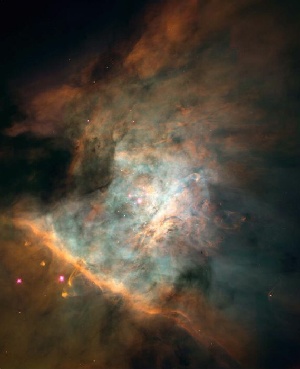The Orion Nebula - A stellar nursery
Click on image for full size
NASA
HII Regions - Stellar Nurseries
Hidden in the sword of Orion the hunter, a weapon and symbol of death,
lies the birthplace of new stars - the stunning Orion Nebula, one of
the many objects catalogued by Charles Messier in the 18th century
during his hunt for comets. Messier noted the position of the nebula
because he didn't want to mistake it for a comet. Too bad he didn't
notice the spectacular event taking place in the nebula, which he
named M42. Nestled in the center of M42 is a group of stars, known as
the Trapezium, which have formed from the gas in the nebula.
The stars of the Trapezium are young blue stars. It is their
energy which makes the nebula glow. The Orion nebula is more or less
circular in shape, and it glows with a characteristic red color. All
HII regions have this color. There are many HII regions with young
stars in the disk of our Galaxy.
You might also be interested in:
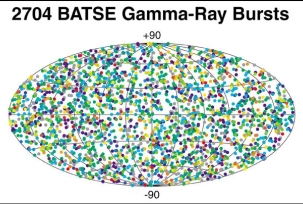
In the 1960's, the United States launched some satellites to look for very high energy light, called Gamma Rays. Gamma Rays are produced whenever a nuclear bomb explodes. The satellites found many bursts
...more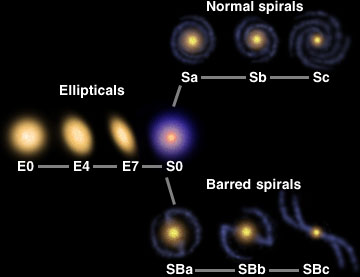
During the early 1900's, which is not very long ago, astronomers were unaware that there were other galaxies outside our own Milky Way Galaxy. When they saw a small fuzzy patch in the sky through their
...more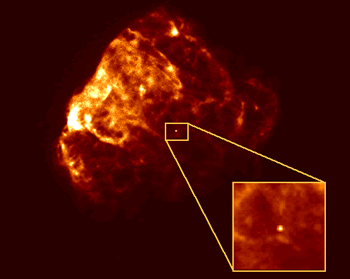
Neutron Stars are the end point of a massive star's life. When a really massive star runs out of nuclear fuel in its core the core begins to collapse under gravity. When the core collapses the entire star
...more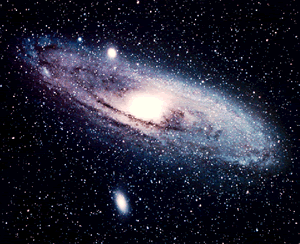
Spiral galaxies may remind you of a pinwheel. They are rotating disks of mostly hydrogen gas, dust and stars. Through a telescope or binoculars, the bright nucleus of the galaxy may be visible but the
...more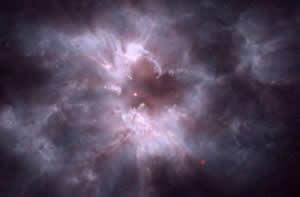
When stars like our own sun die they will become white dwarfs. As a star like our sun is running out of fuel in its core it begins to bloat into a red giant. This will happen to our sun in 5 Billion years.
...more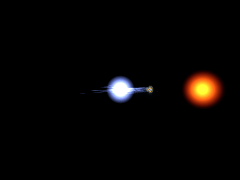
What's in a Name: Arabic for "head of the demon" Claim to Fame: Represents Medusa's eye in Perseus. A special variable star that "winks" every 3 days. Type of Star: Blue-white Main Sequence Star, and
...more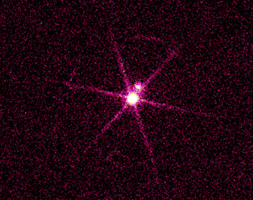
What's in a Name: Nicknamed the "Pup" because it is the companion to Sirius, "the Dog Star" Claim to Fame: Highly compressed white dwarf remnant. Density about 50,000 times that of water. It has approximately
...more


